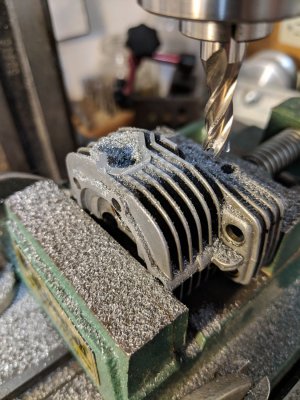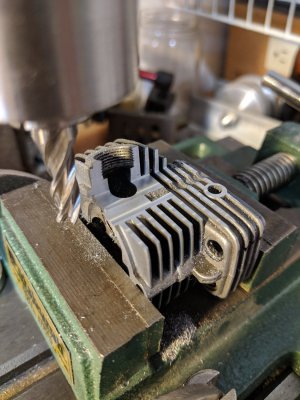- Joined
- Nov 7, 2024
- Messages
- 24
I always liked cutaway engines where you could see what was going on inside, but I can only work on a small scale, so I got an old model airplane engine.
I cut the threaded holes a little short of halfway so the threads would hold when assembled. I haven’t cut the cylinder sleeve because it’s hard cast iron, but I might go back to that later
I cut the threaded holes a little short of halfway so the threads would hold when assembled. I haven’t cut the cylinder sleeve because it’s hard cast iron, but I might go back to that later




